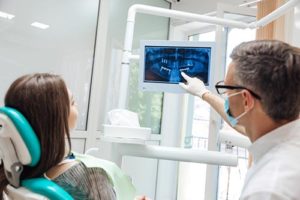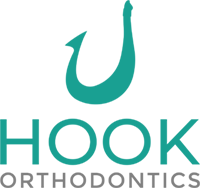FAQs
Many people have anxiety about visiting the dentist or orthodontist. This kind of anxiety is usually rooted in the fear of the unknown. We at Hook Orthodontics want to put your dental anxiety to rest. Here are some frequently asked questions that our patients have:

Frequently Asked Questions:
An orthodontist is a dental specialist in the diagnosis, prevention, and treatment of dental and facial irregularities. Orthodontists must first attend college, followed by a four-year graduate dental program at a university-level dental school accredited by the American Dental Association (ADA). They must then successfully complete an additional two- to three-year residency program of advanced dental education in orthodontics accredited by the ADA. Only dentists who have successfully completed this advanced specialty education may become an orthodontist.
Most malocclusions are inherited, but some are acquired. Inherited problems include crowding of teeth, too much space between teeth, extra teeth, congenitally missing teeth, and a wide range of discrepancies of the jaws, teeth, and face. Acquired problems can be caused by trauma, thumb or finger sucking, airway obstruction by tonsils and adenoids; premature loss of baby or adult teeth; or dental diseases. Many of these problems affect not only the alignment of the teeth but also facial development and appearance as well.
It is usually difficult for you to determine if treatment is necessary because many problems can occur even though the front teeth look straight. Also, some issues look intimidating and complex, which will actually resolve on their own. Asking your general dentist is a useful reference, but we are your best resource since orthodontics is all we do. Our complimentary initial exam is comprehensive and informative, and we would be more than happy to see your child and make any necessary recommendations.
Although determining if treatment is necessary is difficult for you to assess, the following signs may help in prompting you to seek orthodontic advice:
- Crowded or overlapping teeth
- Gaps between the teeth
- Front top teeth not lining up with the bottom teeth
- Top front teeth not meeting with bottom teeth
- Top front teeth covering more than 50% of the bottom teeth.
The American Association of Orthodontics recommends that your child be evaluated by age seven. An orthodontic screening no later than age seven enables the orthodontist to detect and evaluate problems that exist, advise if treatment will be necessary, and determine the best time for treatment. Early detection of orthodontic problems is vital to take early corrective action and avoid more difficult treatment later.
Age is not a factor in considering orthodontic treatment for adults. Any adult in good general health with healthy gums and proper bone support for the teeth is an excellent candidate for orthodontic treatment. About 25% of our orthodontic patients are adults, and that number is still growing!
Orthodontic treatment has improved dramatically. As a rule, braces make your teeth tender and sore for a few days, but they are not painful. This annoyance can be relieved with an over-the-counter analgesic. Today’s braces are more comfortable and use technology that reduces the discomfort. We use the latest in biocompatible braces, the advanced technique with light force, and the highest quality of orthodontic materials to reduce discomfort and treatment time.
You may have to wear braces for between 6 months and 30 months, or in rare instances, longer. This depends on the development of the dentition, the severity of the problem, the patient’s cooperation, and the degree of tooth movement required.
Each treatment is a way to address crowding of the teeth. Extraction therapy is a technique where one or more teeth are removed to make room for the other teeth in the mouth. This contrasts with non-extraction therapy where one expands a patient’s jaw and adjusts the size and shape of the teeth to make them fit within the jaw. Our office’s treatment philosophy is very conservative, and we do make every effort to avoid extraction. However, for severe crowding and severe jaw discrepancy, the extraction approach may be required.
When orthodontic treatment is implemented correctly, treatment is often less costly than the dental care required to treat the more severe problems that can develop years later. Financing is available and our office offers many payment programs that will meet your needs. We also accept all credit cards as well. Also, many insurance plans now include orthodontics.
